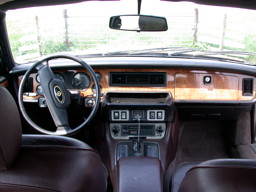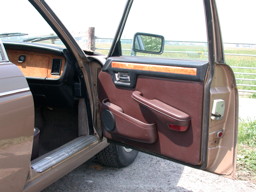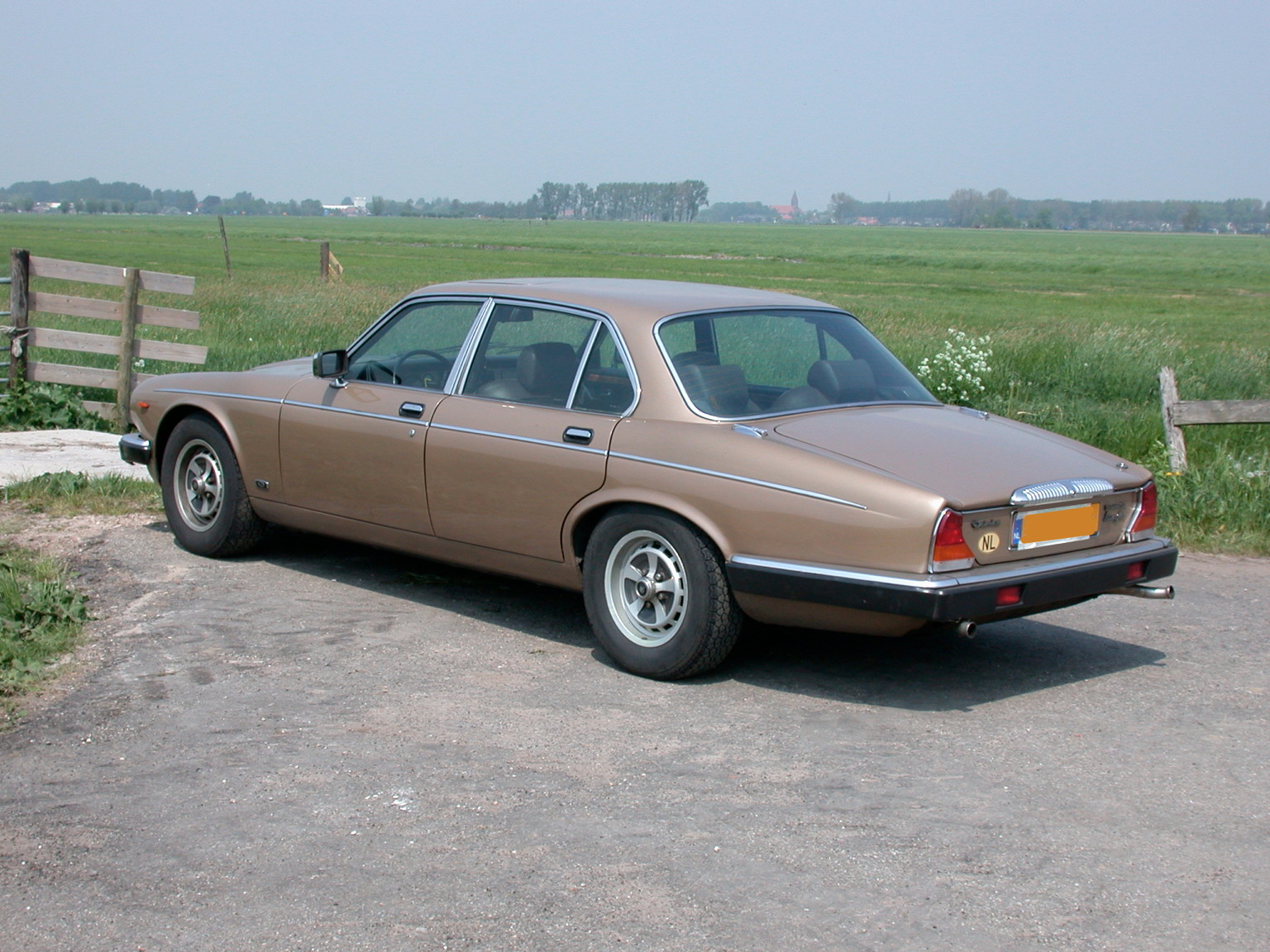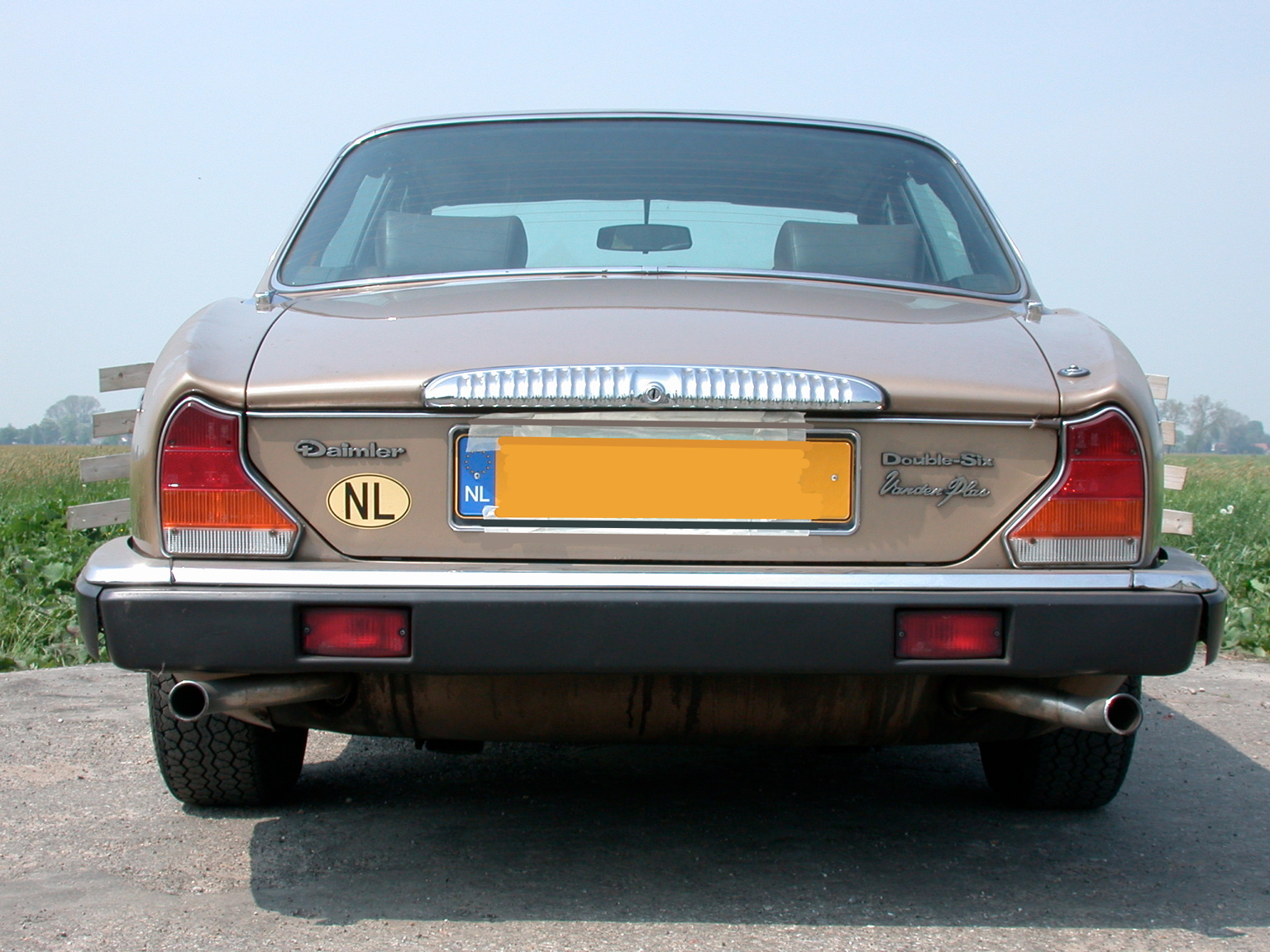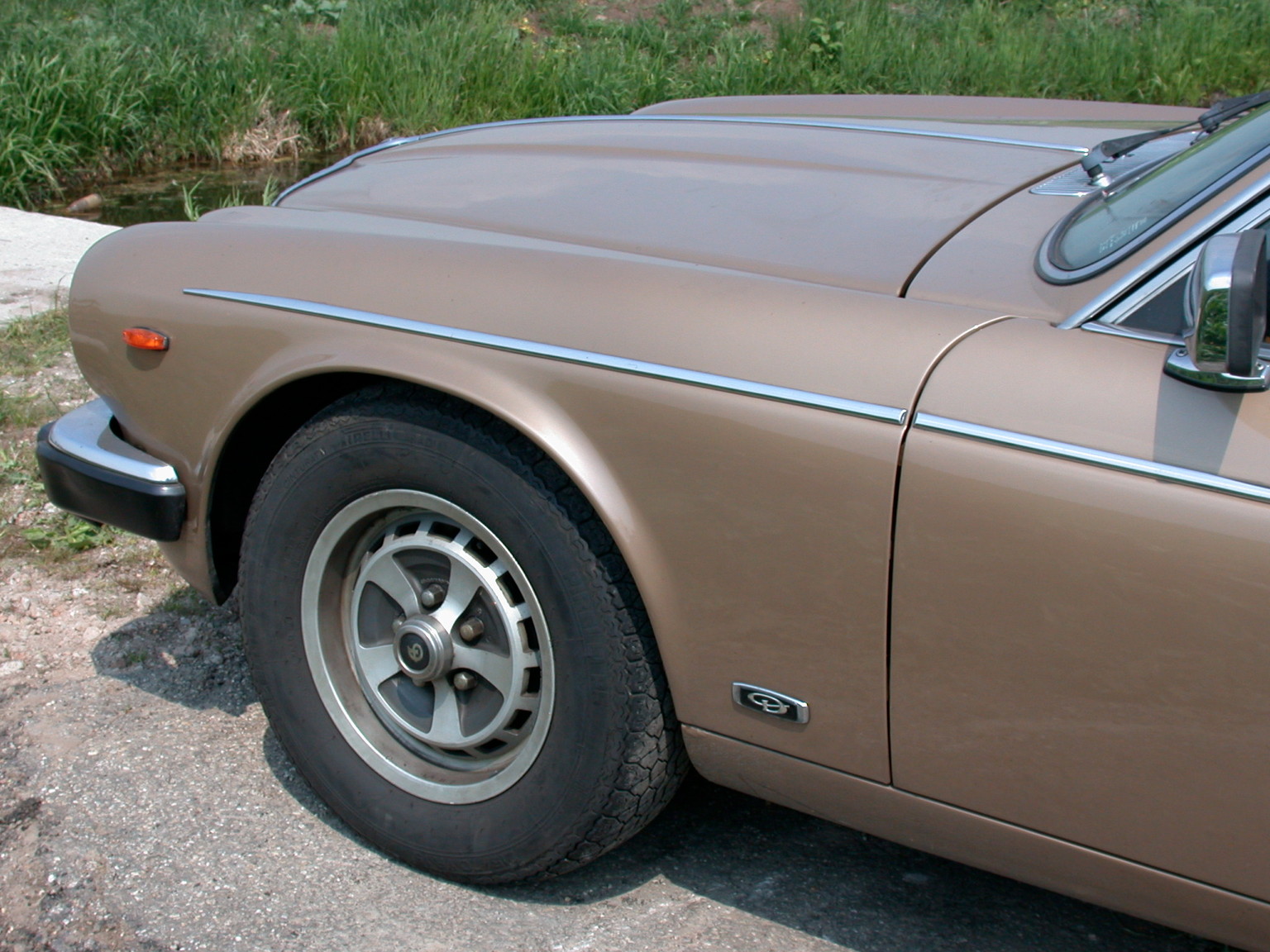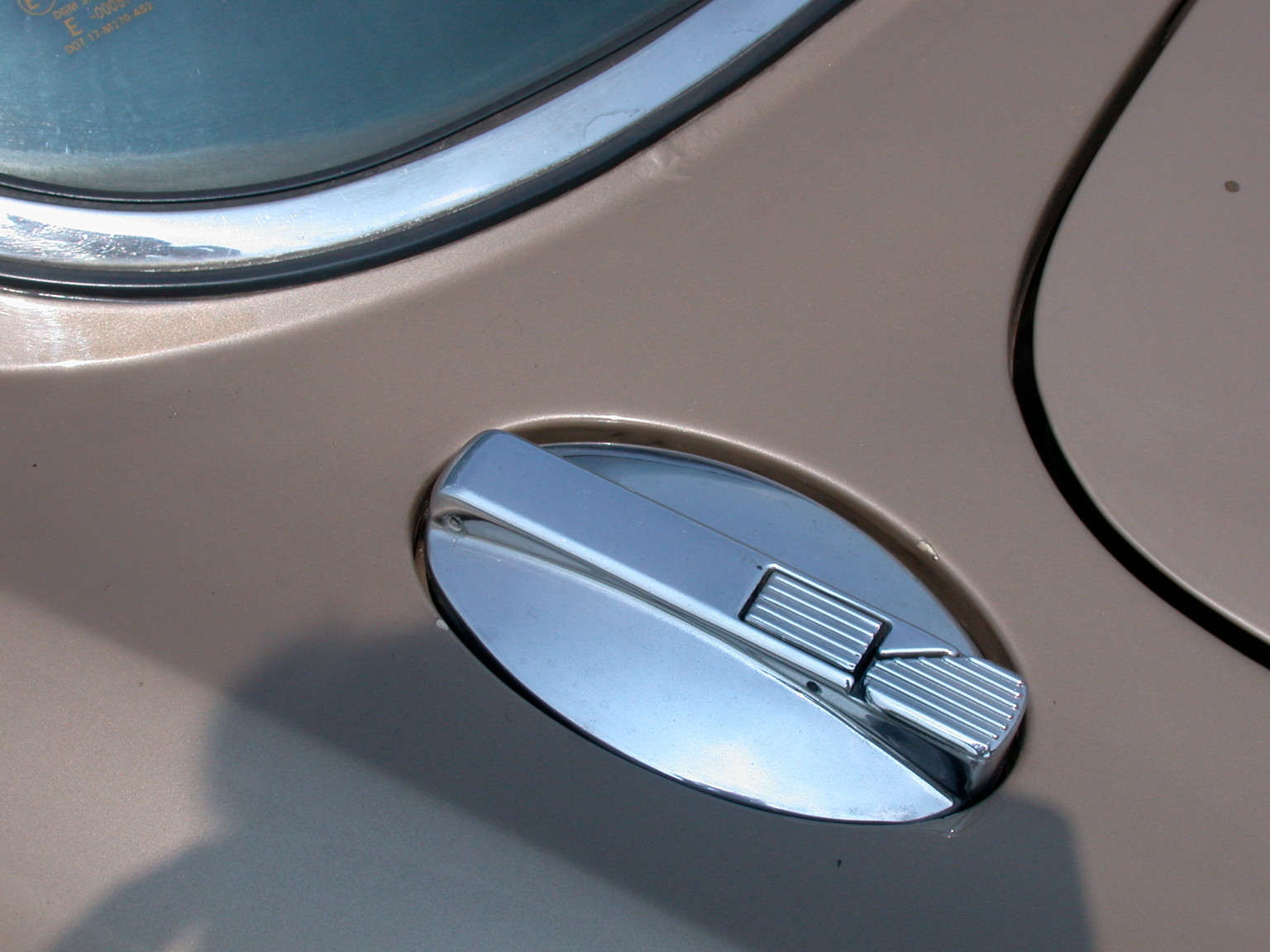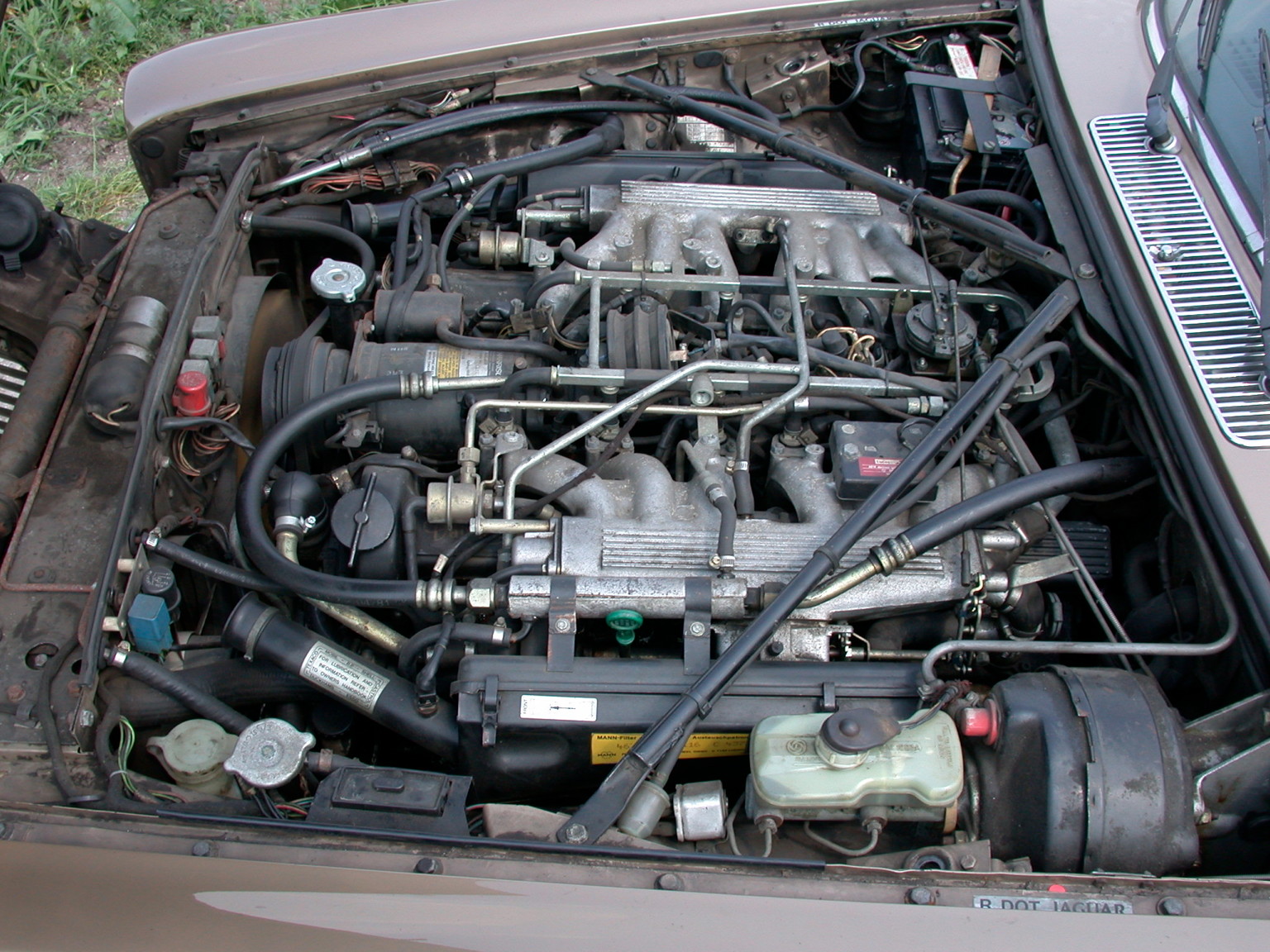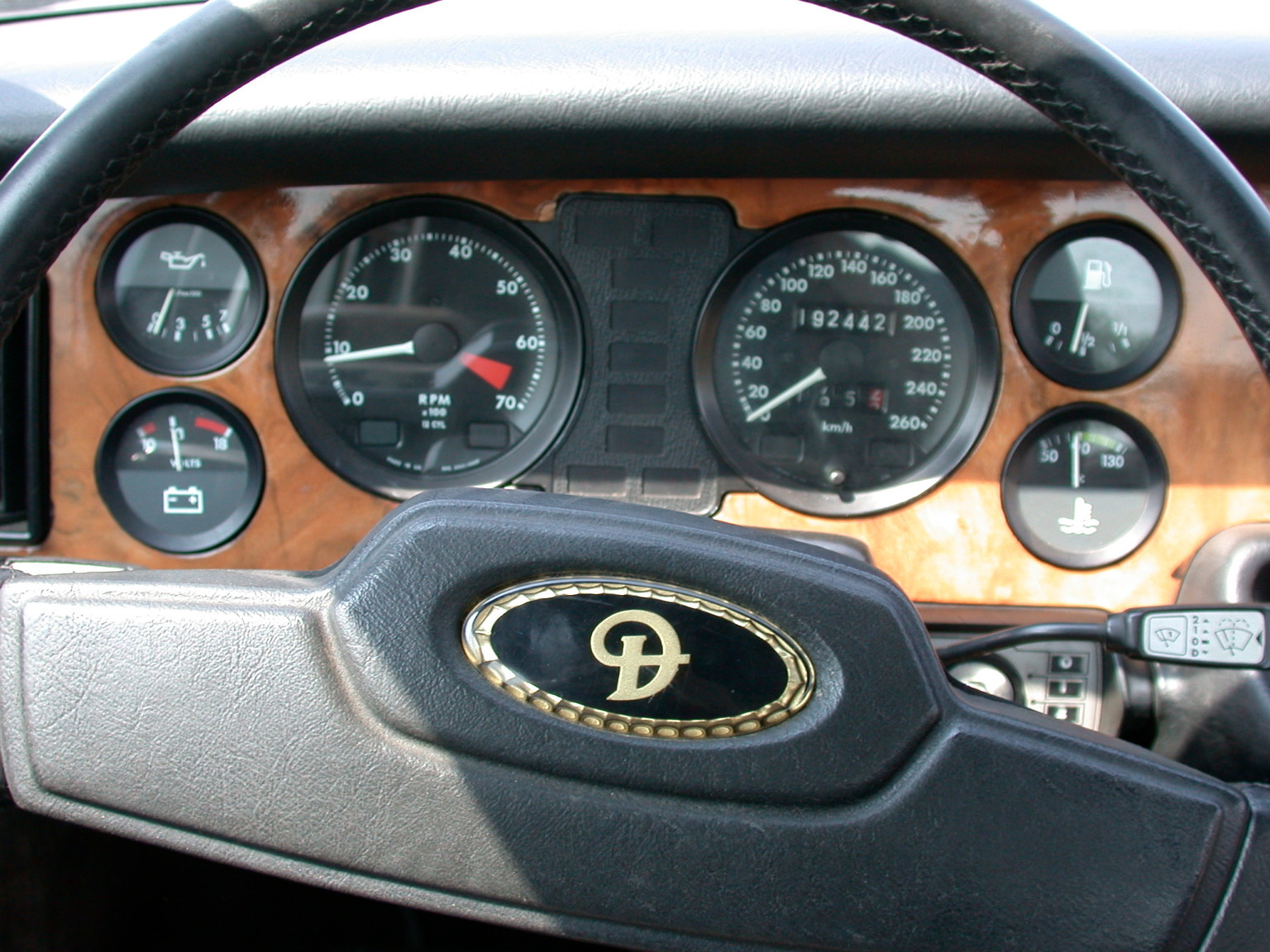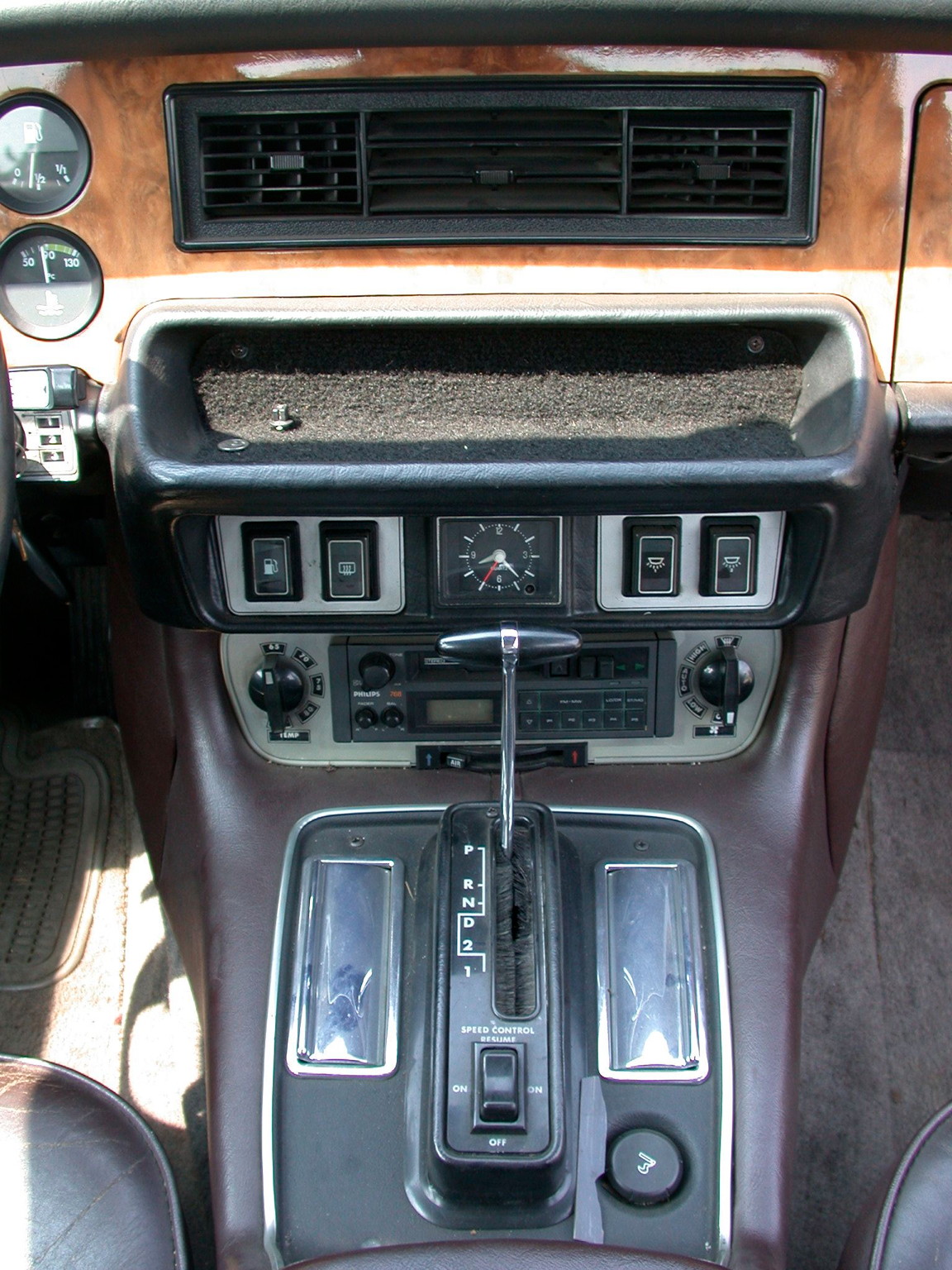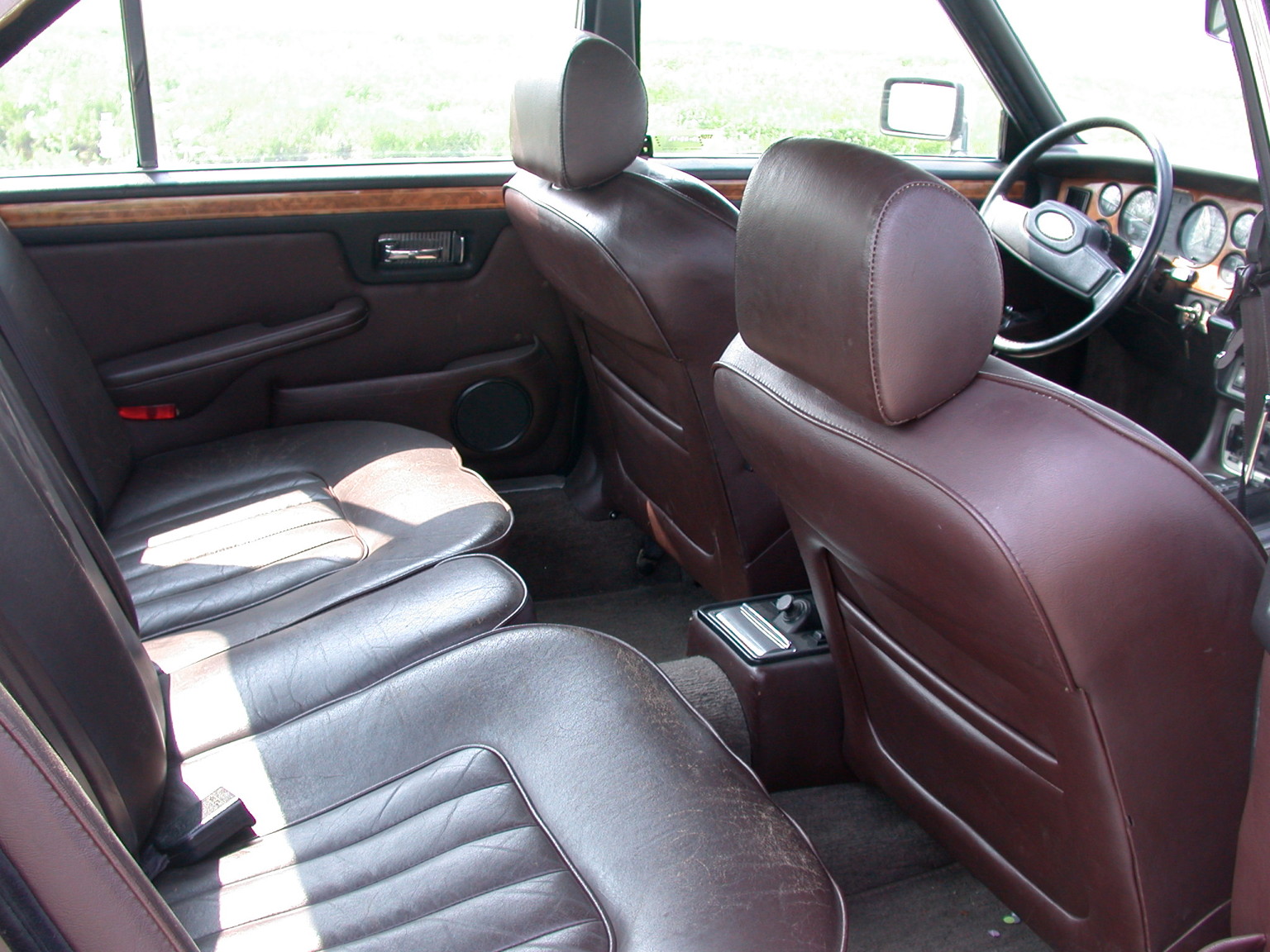Een Jaguar (of Daimler), maar welke?


Maart 2008, volledig herschreven en sterk uitgebreid in augustus 2018 en februari 2019, nu primair in het Engels en daarna in het Nederlands vertaald
Aan de vertaling wordt (af en toe) gewerkt …
… lees lekker door … op eigen risico.
Overzicht van deze pagina
- Jaguar?
- De vanzelfsprekende keuze: de Jaguar XJ6 serie 3
- De Daimler Double Six als favouriet
- Bezoek aan een 1982 Daimler Double Six
- A late series 3 Daimler Double Six?
- The Jaguar XJ40
- The Jaguar X300
- The Jaguar X308
- I decided for … the XJ40! An XJ40 Daimler Double Six!
Jaguar?
|
Op een vorige pagina beschreef ik de auto's die ik mooi vond tijdens de lange periode dat ik geen auto bezat. De Rover SD1 of 3500 Vanden Plas was mijn favoriet en het werd mijn (onze) eerste auto. Feitelijk hadden auto's niet mijn belangstelling en ik wist heel weinig over automerken en modellen. Niet zo vreemd, omdat ik geen auto's in mijn directe omgeving had, want mijn ouders kochten hun eerste auto pas toen ze in de zestig waren! Omdat het net als Rover stijlvol, Brits en luxueus is, zou je verwachten dat Jaguar ook een van mijn favoriete merken was. Maar dat was het niet, tenminste niet zo rond 1985 tot 1990. Mijn favoriete wagens, zoals beschreven op de zojuist genoemde pagina, waren minder kostbaar dan het topmerk Jaguar. Alle auto's die ik op die pagina noemde konden na vele jaren van afschrijving worden beschouwd als betaalbaar voor een oude student. Maar een Jaguar kon ik me duidelijk nooit permitteren. Voorts waren Jaguars exclusieve wagens. Als ik al naar auto's keek, wat ik niet veel deed omdat ze me niet zoveel interesseerden, dan zag ik nooit Jaguars om me heen omdat ze te exclusief waren. Niettemin zat Jaguar wel altijd in mijn hoofd. Zeker nadat ik de Rover SD1 een paar jaar had en meer dan tien jaar nadat ik mijn favoriete auto's op een rijtje zette (zoals op die webpagina), begon ik Jaguar expliciet te waarderen. Ik vond net in mijn aantekeningen (van 2006) dat ik de vormgeving van welke Jaguar dan ook niet superieur vond aan die van de Rover SD1, maar de exclusiviteit en aantrekkingskracht waren dat wel. Net als met oudere Rovers komt er een moment dat oude Jaguars 'betaalbaar' (affordable) worden, of laten we zeggen minder realistisch om van te dromen. Tsja, welke Jaguar zou dan mijn favoriet zijn? Lees hieronder verder! ↓ |

Een fascinerende Jaguar advertentie, gepubliceerd bij de lancering van de XJ6 in 1968. Dat jochie kon ik niet zijn, omdat mijn jeugd volstrekt autovrij was en ik totaal geen belangstelling voor auto's had. |
De vanzelfsprekende keuze: de Jaguar XJ6 serie 3
|
Eén ding is duidelijk: ik heb de E-Type nooit mooi gevonden en de Mk II ook niet, terwijl dit toch de meest geliefde Jaguars zijn. Uiteindelijk is het altijd hetzelfde liedje bij mij: ik hou het meest van de meest ongeliefde modellen, wat dan weer als bonus het voordeel heeft dat ze ook het betaalbaarst zijn. Ik ben nog steeds verbaasd over de belachelijke prijzen die voor E-Types betaald worden en na mijn aanvankelijke verbijstering begin ik te lachen omdat ik dan inmiddels heb berekend hoeveel stuks van 'mijn' Jaguars ik voor dat soort bedragen zou kunnen kopen Ik heb de styling van de Jaguar XJ6 altijd gewaardeerd, of beter gezegd: de Series 3 (Serie 3 in het Nederlands). De XJ6 was het model dat Jaguar's sir William Lyons ontwierp als opvolger van een aantal tamelijk ouderwetse Jaguar-modellen. Dit was de 'Series 1', geïntroduceerd in 1968. In 1974 werd de serie 2 geïntroduceerd, met een andere opzet van de bumpers en schakelaars op het dashboard als meest in het oog springende verschillen. In 1979, in feite als tijdelijk model vóór de introductie van een geheel nieuw model, werd de Serie 3 geïntroduceerd. Het was het eerste (en laatste?) model dat niet door de ontwerpafdeling van Jaguar zelf werd ontworpen, maar door het Italiaanse Pininfarina. Omdat er kolossale kwaliteitsproblemen waren met de Serie 2 en de werknemers van Jaguar en de Britse industriepolitiek alles onzeker maakten, werd dit tijdelijke model uiteindelijk het langst geproduceerd: pas in 1986 werd de opvolger gelanceerd, de XJ40. Ik hou niet echt van het ontwerp van de Serie 1. Nu, na een paar jaar, moet ik zeggen dat ik vind dat de Serie 2 een zeer fraai en klassiek uiterlijk heeft en misschien is het wel de mooiste XJ6. De bouwkwaliteit heeft er echter voor gezorgd dat de meeste Series 2 inmiddels letterlijk zijn opgelost! De Serie 3 is een schoonheid met heldere lijnen en een tamelijk 'modern' uiterlijk. In feite is de Serie 3 altijd mijn favoriet geweest, terwijl ik de schoonheid van de Serie 2 pas recentelijk 'herontdekte'. Vanaf, zeg, 1984, was de bouwkwaliteit van de Serie 3 in het algemeen heel goed, hoewel de verkopen nog steeds moeizaam liepen vanwege de beruchte naam die het model had (lees Saving Jaguar van voormalig CEO sir John Egan! koop dit boek hier). Feitelijk is Serie drie zelfs geproduceerd van 1979 tot 1992! Omdat de XJ40, de opvolger van de Serie 3, bewust zo was ontworpen dat er nooit een V-configuratie-motorblok in het smalle frontchassis zou passen (om ervoor te zorgen dat het hoogste management van British Leyland niet op het onzalige idee zou komen om de Rover V8 in de Jaguar te willen plaatsen), werd de Serie 3 nog geproduceerd tot 1992 om het mogelijk te maken nog Jaguars aan te bieden met de beroemde V12. |

Een Serie 3 Daimler Double Six uit 1992, het laatste jaar dat deze werd geproduceerd, zes jaar nadat de productie van de XJ40 begon. Een gunmetal grey wagen met de typische 'pepperpot' lichtmetalen wielen. Merk de geribbelde ('fluted') Daimler grille en de standaard mistlampen op. Foto van een verkoopwebsite. 

Misschien is dit de mooiste van de Jaguar XJ6 modellen: de Serie 2. Dit is een Daimler Sovereign 4.2 litre van maart 1978. Van de voorkant mag hij misschien niet zo anders lijken dan de Serie 3, maar verlijk de vorm van de ramen en het dak met de Serie 3 foto's hierboven en hieronder. Foto van een advertentie op Marktplaats. |
De Daimler Double Six als favouriet
|
So the Jaguar Series 3 appealed the most to me. When looking around to Series 3 Jaguars for sale – always a nice way to spend some evening hours – it struck me that there were very many cars for sale, in fact much more than of the cheaper Rover SD1, which in my view has always been the most beautiful. But there have been a several engine and luxury types of the XJ6. So, one can make a choice, if I would ever be in the comfortable position of being able to buy such a car. Around 1985, the XJ6 (Series 3) consisted of the following models, in order of price:
What Series 3 to choose? I considered that, just as I had done with the Rover SD1, it is always preferable to choose the most luxurious variant. In that way you get the best specced and most enjoyable car for only a little more money, incomparable to what the most luxurious model had costed more when sold new. The most luxurious, best specced model of a Jaguar is the Daimler. Daimler was a separate English brand, until Jaguar bought it in 1960 to acquire extra production capacity. After several years of separate Daimler models, the Daimler brand was used for Jaguar models with the most luxurious specification. So for me, the Daimler was the way to go. With the Series 3, this also means you get the world famous 5.3 litre V12 engine. It is famous and very refined, although a pain in the ass to work on as one can't get at whatever parts … Anyway, I decided if I would ever buy a Jaguar, and I could afford it, it should be the Daimler Double Six! Later on, I will describe on a separate page what is so nice about a Daimler and in particular what the differences are between the individual Daimler and Jaguar models. |
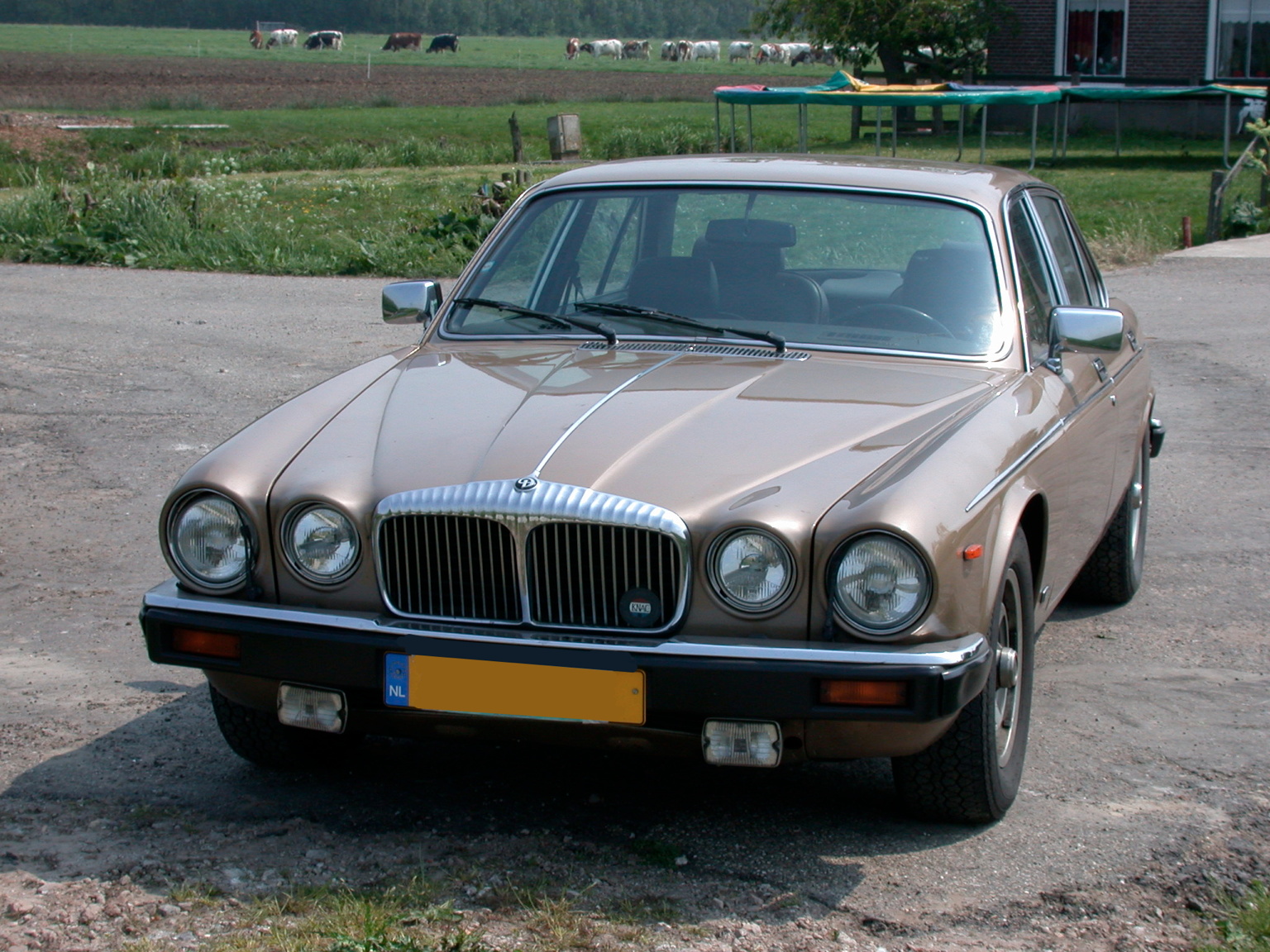
The series 3 Daimler Double Six Vanden Plas from 1982, as visited by me (see next section). |
Bezoek aan een 1982 Daimler Double Six
In April 2006, I saw a Daimler Double Six for sale and although I couldn't yet afford to buy it, I asked the seller if I could visit and meticulously inspect the car, as I wanted to familiarise myself with it. The De Goey garage in Montfoort had stowed it away as they regarded it as a very special car only to be sold to a real enthusiast. They got the car ready and I was allowed to drive it. Amidst the mid-Holland meadows, I have watched the car extensively and photographed it.
The Double Six is actually a Vanden Plas. For a short period, the Daimlers came with a luxurious specification, the Daimler Double Six, and an extra luxurious specification, the Daimler Double Six Vanden Plas. On the bootlid it is badged as such and the Vanden Plas can be recognised from the double bright wood strips in the door veneer panels: see my photos.
This Series 3 car dates from October 1982. Now I have often seen that the interior design of the Series 3 has changed around 1983, although I have never read on it. This car has the more round centre console with a larger tray below the dash vents, one strip with four switches and a classic clock and without any veneers, where the later Series 3 cars have veneers (for the Daimler also on the centre console!) and two instrument strips, including a trip computer for the Daimler. Furthermore the earlier more luxurious Series 3 cars can be recognised from the alloy 'five-spoke-design' Kensington wheels.
It is in a gorgeous golden colour (possibly 'silver sand'?) and the leather upholstery is in a reddish dark brown (Jaguar trim colour name?), making it look like a seventies car.
By clicking on any of the photos below, you can click to all of my 19 selected photos!
In January 2014 I saw a Daimler Double Six for sale on Marktplaats and I was almost certain that it was this very car. It had severe damage to the right hand side over almost the full length of the car and the left front door was bad. What a pity … Now, 1 February 2019, I see at the RDW the car has last been sold in February 2014, but still has no valid MOT. That it is still registered at least means that it still exists …
A late series 3 Daimler Double Six?
|
For a while, I considered to look for a late series 3 Jaguar, preferably a Daimler Double Six for reasons I described above. It is well known that the seventies Jaguars, including the Series 3, can be or will be of a very bad build quality. But from 1984, these cars are suddenly very good! If you have read the extensive search for quality of Jaguar's boss John Egan in his book Saving Jaguar, you will understand why. Now in 1986, when all Jaguar employees understood how to manage quality while building a Jaguar, the successor of the Series 3 was launched: the XJ40. The engine compartment of the XJ40 was deliberately designed too narrow to fit a V-shaped engine in. But now the oil crisis was over, there was again demand for the impressive Jaguar 5.3 litre V12. For that reason, the Series 3 was still produced to 1992, six years after the XJ40 was launched. So if one wants a good Series 3 and preferable the famous V12, why not look for a 1986 to 1992 Jaguar XJ12 or Daimler Double Six? It struck me that there were relatively many for sale, back in 2006, but still while I write this in 2019. This will be for several reasons:
Indeed, I have seen beautiful examples of the late Series 3. The Daimler Double Six comes with the most precious burr veneers and in some cars these have been beautifully survived and sometimes not faded at all. By the way, the latest years come with options not available to earlier models, like ABS and colour-coded piping. |

A series 3 Daimler Double Six from the last build year 1992, with beautiful unfaded Daimler-quality burr walnut veneers. Also mind the different styling of the centre console compared to the 1982 DD6 above, only found at models from after 1984 or so. 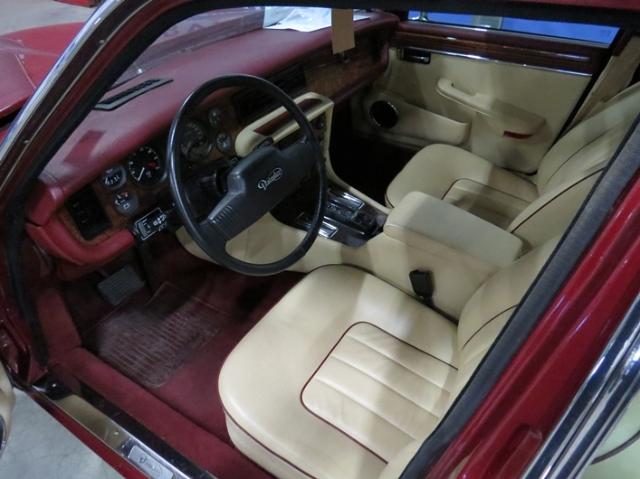
The last Series 3 Jaguars were available with new options like ABS, cream or magnolia leather and contrasting piping, as in the Daimler Double Six above, dating from 1991. (I have my doubts, however, on the red dashboard: never seen before.) |
The Jaguar XJ40
|
The successor of the successful Series 3 was launched in 1986. It wasn't given a new name: it was just the XJ6. But it is well-known by its internal Jaguar identification: the XJ40. Although it was a much more modern car, very refined and in general of high quality (although at the beginning not as good as hoped), it has never been very loved. Its rather sleek, smooth, angular design was modern, but got out of fashion rather soon. Many potential Jaguar buyers regarded it as non-Jaguarish. In particular the rectangular headlamps and the pancake-flat bonnet were disliked. Please note that only the more expensive Sovereign and Daimler models got the 'styled headlamps', as Jaguar called them! For me they fit perfectly in the overall XJ40 styling, better than the twin round headlamps. The XJ40 never had a long wheelbase as standard. However, in 1993 the handbuilt Majestic was introduced: a car with a wheelbase extended by five inches by cutting an existing body in two. The roof at the back was 5 cm higher, making custom rear windows, rear doors and interior panels necessary. Although I now already can reveal that I in the end loved the XJ40 the most of all Jaguars, I back in 2006 or so regarded the XJ40 in the same way as many Jaguar enthusiasts and potential Jaguar buyers. What did not help was that many cars were around in a sorrow state, as the black XJ40 to the right, probably just because they weren't loved, hence they were cheap, hence buyers who could afford an XJ40 could not afford to spend a lot to maintenance. My theory … |

Pure neglect and lack of interest resulted in many XJ40s to look as unattractive as this 1989 one. 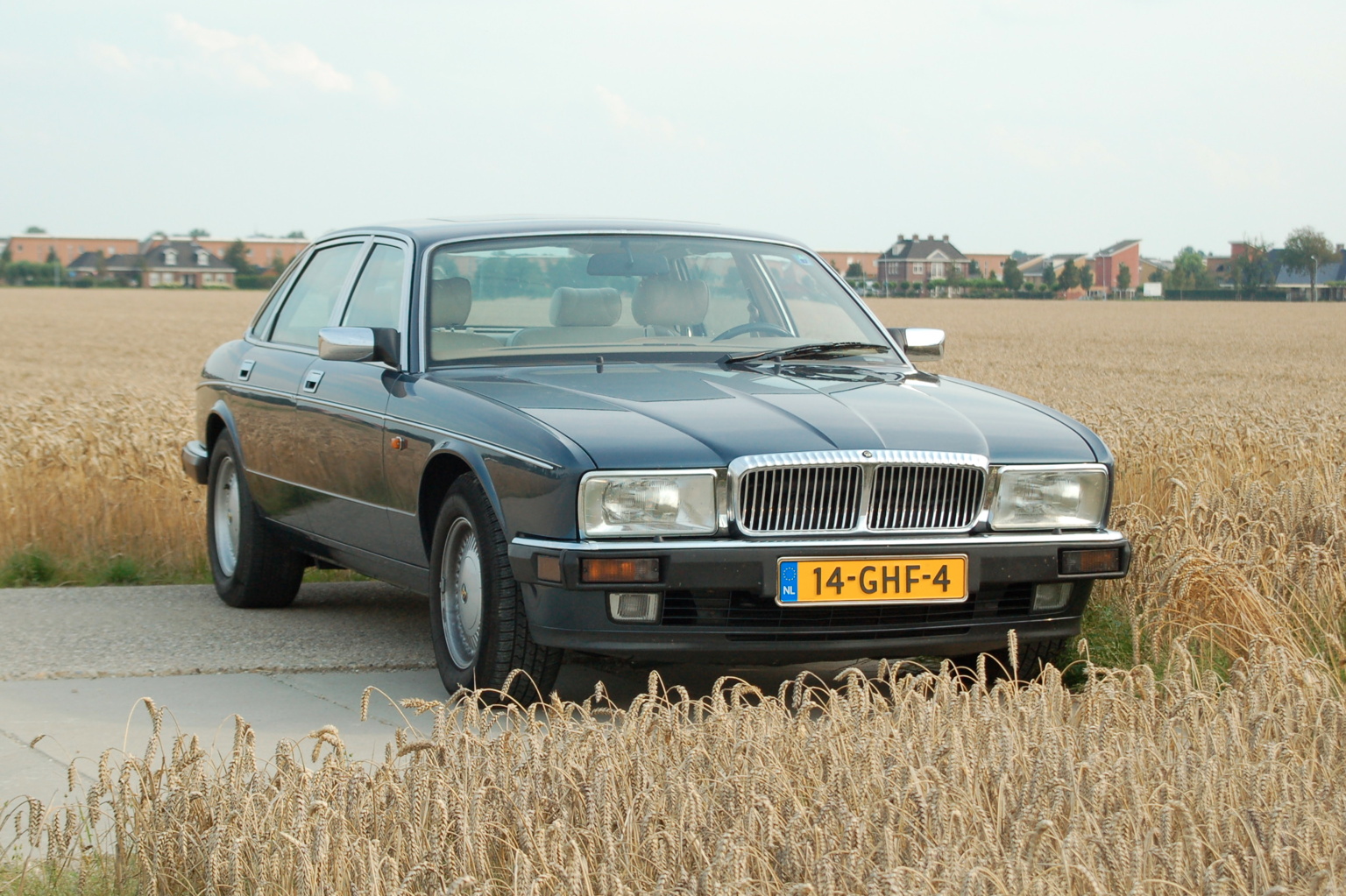
The rectangular 'styled headlamps' are standard for the Sovereign and Daimler XJ40s and characteristic for its overall style, I think. This is my Daimler Double Six. 
The XJ40 could be ordered with the 'classic' twin headlamps. Only the cheapest model, the XJ6, had them standard. This is a Daimler four litre. During the last two years of the XJ40, the twin headlamps came with bezels in the car's paint colour instead of chromed. The leaper was never available for any XJ40 and certainly does not belong on a Daimler (as it is not a Jaguar …) in my view. |
The Jaguar X300
|
The successor of the XJ40 was the X300, again the internal Jaguar code name. It was introduced in September 1994 ('Model Year 1995'). Although it has a rather different look from its precursor, it is essentially a restyled late type XJ40 with several technical improvements. Actually, although it looks the same, the 1993 XJ40 differs more from the 1992 XJ40, than the 1995 X300 differs from the 1994 XJ40. Because of the criticism of potential Jaguar buyers, the styling returned to the classic Jaguar styling with the curved bonnet and 2 times 2 round headlamps. And indeed, this model is even by current Jaguar enthusiasts much more loved than the XJ40. The interior only saw a very light restyling and the typical XJ40 instrument dash extensions are still present in the X300. The X300 saw a further improved six cylinder four litre line engine, the AJ16, but the famous six litre V12 was retained. The X300 series indeed has its Daimler Double Six top model. A big difference in the X300 model line compared to the XJ40 was that the long wheelbase version was now produced on the standard production line. It could be ordered by electrically adjustable rear seats. These seats do exist in the XJ40 Majestic but are extremely rare. At the time I started to look around for a Jaguar, the X300 was still too expensive for me. And in the end I liked the XJ40 more because I regarded it to have a more pure style. It is just more convincing. In my view. |
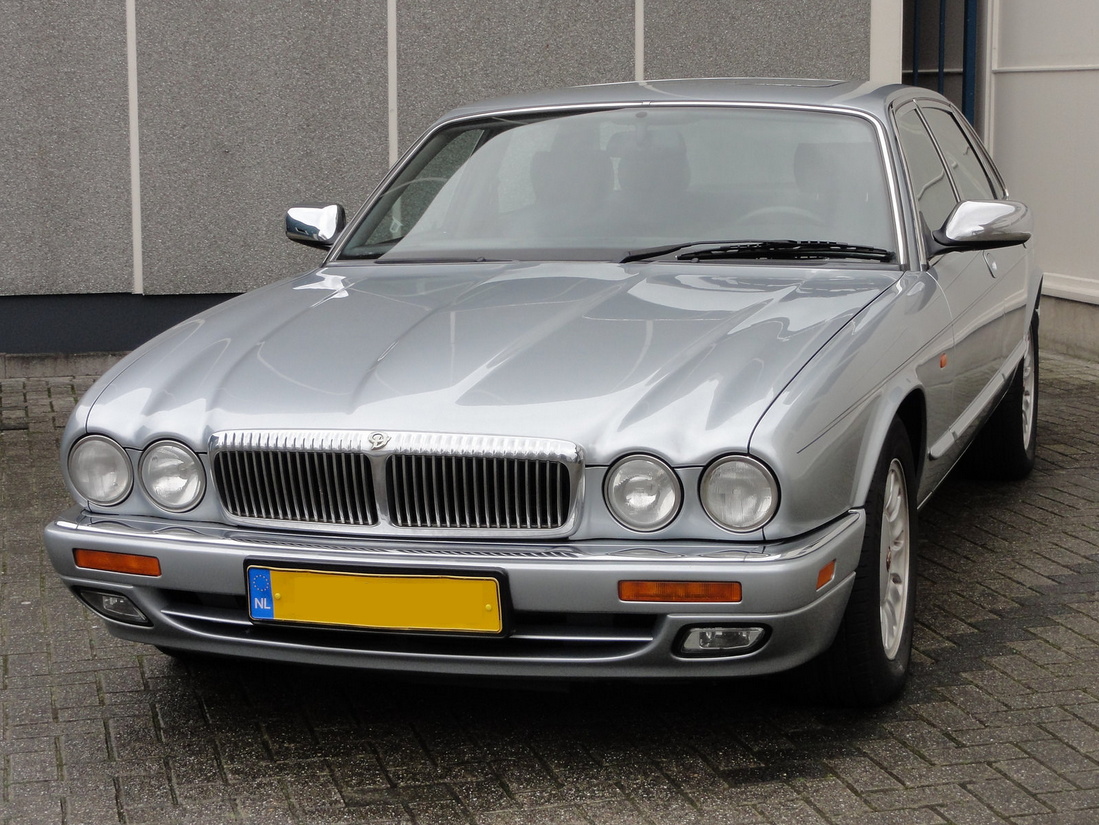
Although technically there were only minor improvements, the 1995 X300 looked much more classical than its XJ40 predecessor. (Photo Djurre Gerritsen) 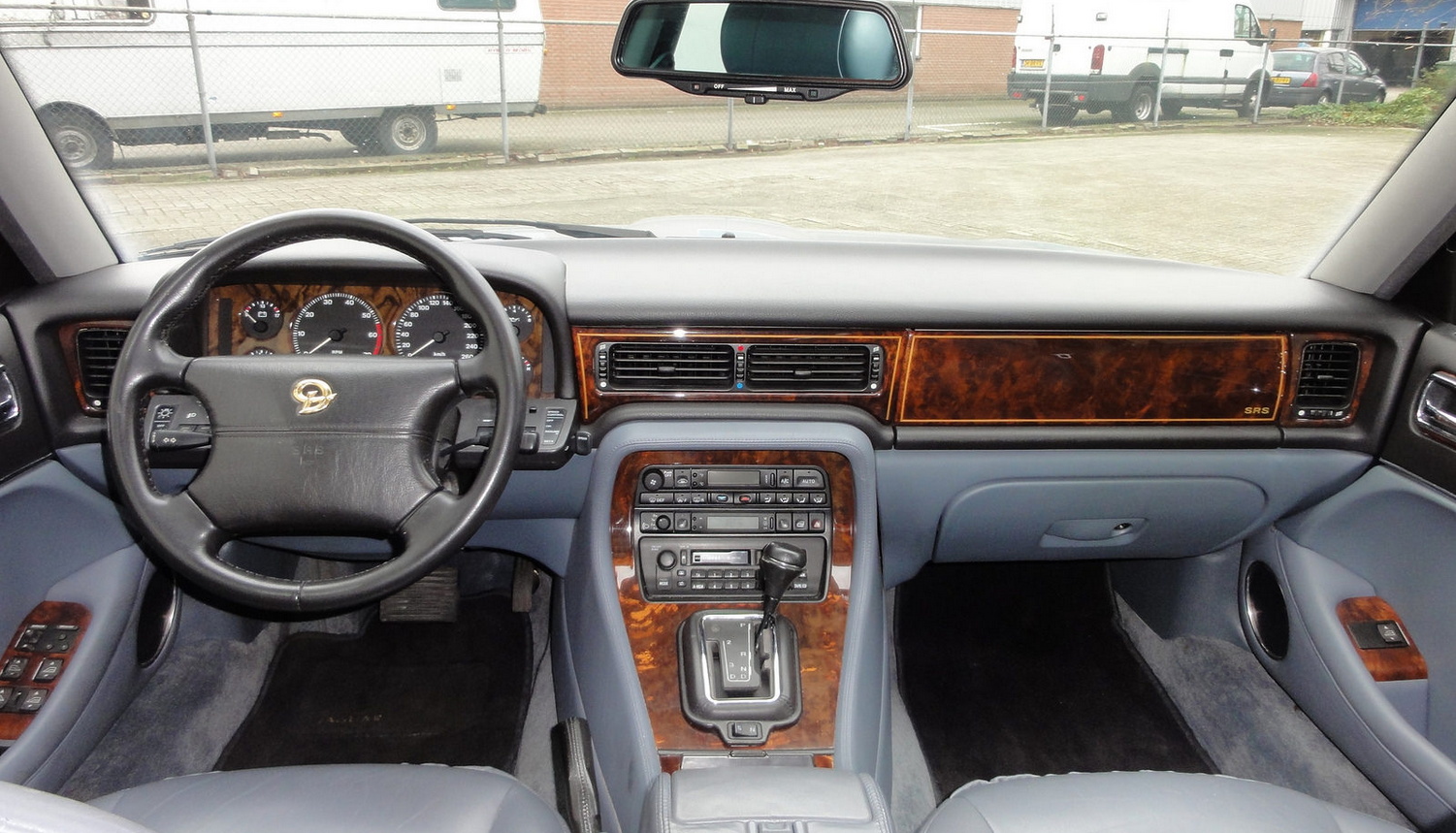
The styling of the X300 interior was only slightly modernised compared to the XJ40. (Photo Djurre Gerritsen) 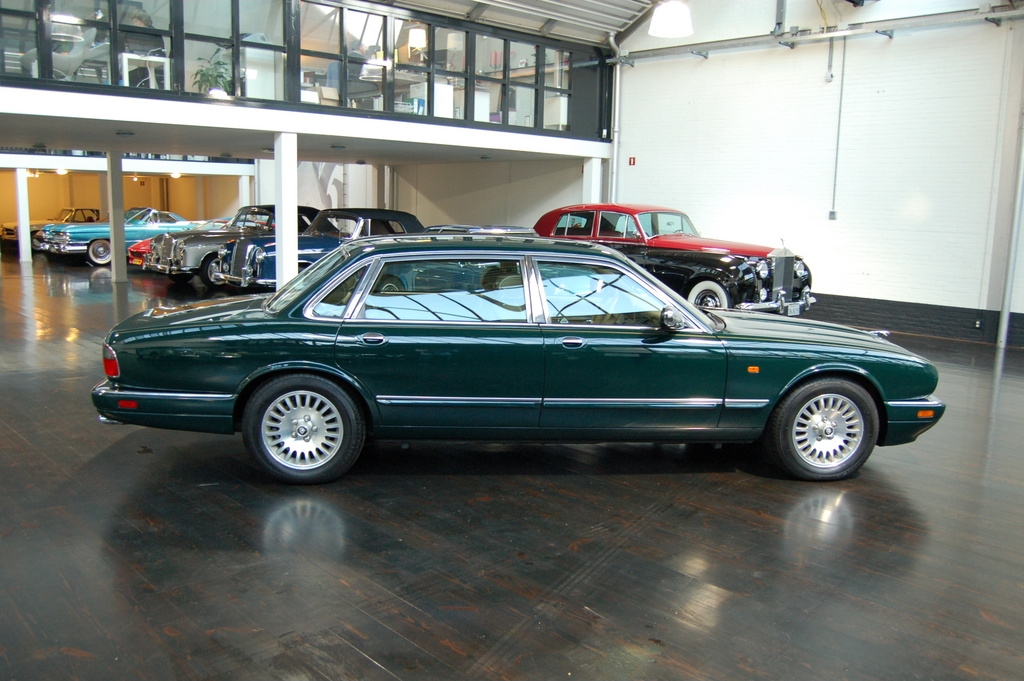
The X300 was standard available with extended wheelbase (and higher rear roof). This model is called X305. The car on the photo is actually is a Jaguar XJ12. The very long rear door and higher roof are clearly recognisable. (Photo of a car for sale at Diepenbroek) 
The long wheelbase X305 was available with electrically adjustable individual rear seats. The seat could be shifted forward, changing the angle of the backrest at the same time. The headrests and lumbar support are ajustable and the seat has electric heating. I don't know what to think of the Persian carpets: they are typically Swiss and typical to the care Swiss cars get or just a way to make a car for sale look like that … (Photo of a car for sale in Switzerland) |
The Jaguar XJ8 or X308
|
In september 1995, the X300 after two years was replaced by the X308 or XJ8. This was the last Jaguar built on the XJ40 platform. There were many styling changes, in particular in the interior. Everything has been made rounder, e.g. the door veneer panels. From the outside the same can be said from the indicator lenses in the bumpers. I think that's the easiest way to distinguish an X308 from an X300 from the outside. The weird 'dash extension plank' from the XJ40, that was retained in the X300, has been discontinued: the X308 got a fully new dashboard with one car-wide veneer panel with three deep round instrument recessions. The six and twelve cylinder engines were all discontinued and 3.2 and 4.0 litre V8s were introduced, a first for Jaguar. The 4 litre engine was also available with twin superchargers (a supercharger is a compressor that pushes air into the combustion chambers, leading to higher power; a supercharger is driven by a belt from the engine, a turbo charger is driven by the pressure of exhaust gases). The equivalent of the most luxurious XJ40 and X300, my favourite V12 Daimler Double Six, is the Daimler Super V8, with the 4.0 litre supercharged engine. The Daimler V8 has the 4.0 engine without supercharging. They can be distinguished from the different alloy wheels. The X308 still contained many XJ40 elements, because it was build on that platform and can be regarded as an evolutionary XJ40. The X308 was superseded by the X350 in 2003, a completely new design with a fully aluminium body. |

The top model of the X308 is the Daimler Super V8. Many details, in particular in the interior, have a much more rounded design compared to its predecessor, the X300. The Super V8 with supercharger can be recognised by its standard 17" alloy 'Solar' wheels. (Photo of a car for sale in Switzerland) 
The styling of the X308 dashboard is definitely very different from that of its predecessor. Also the round details and panels can be seen. |
Ik heb gekozen voor … de XJ40! Een XJ40 Daimler Double Six!
|
I was not really looking for a second car in 2007. I did my work still with our first car, the 1985 Rover 3500 Vanden Plas. In December 2007 it had about 371,000 km on the clock, while we bought it with only 142,300 km. It wasn't really the beauty it has been and with my company I had a good turn-around. So I had reasons to look around for a second car. Of course I would never sell the Rover. Although it does not run at the moment, I still have it now, with 383,000 km on the clock! And then, all of a sudden, when I was again wasting my time by looking on the internet for Daimlers, I came across a website of a Dutch guy with stunning photographs of stunning cars that he apparently found in Switzerland. In fact he was a professional photographer and he had a second business in importing very good cars from Switzerland. He had a contact in Switzerland looking for very good cars with only very little kilometers, typically as second or third luxury car of wealthy owners, only on the road for a couple of months a year and parked in the garage in the basement of the house. He offered a stunning Daimler Double Six from 1993 with only 89,000 km. It was not cheap, but the detailed professional photos showed an impeccable car. It was in the classic Westminster blue with Magnolia (yellowish) leather upholstery. These photographs impressed me quite a lot … and I was very well aware that this was both because of the impeccable condition of the car and the skills of the photographer, who used soft yellowish evening daylight, professional lenses giving very sharp images, the telephoto lens effect to image cars without distortion, and depth of field effects. These photographs made clear to me that the XJ40 indeed is a beautiful car. If you find a very good one, the interior is of stunning beauty and finish. I decided to contact the seller and I tried to learn as much as possible. I was the well-known 'window shopper' for whom we have in Dutch the clear expression "kijken, kijken, niet kopen" (looking around, looking around, not buying). I noticed that many sellers who are themselves enthusiasts like to share their expertise and do not really care if you are not immediately buying. The guy of this car also informed me on my request about the painstaking way many Swiss owners care for their car, have license plates that can be used temporary leaving the car most of the time in the heated garage, and that the legal tests are very strict and even the typical English oil leaks are not allowed. But there was another influence. One of the most enjoyable things to do is looking through older car brochures. Shiny professional photos of cars that one never could afford, but now these brochures are getting antique, even I possibly could. By browsing and reading and reading again, one also gets familiar with the models and specifications. I clearly remember that there was one image in one of my Jaguar brochures that struck me – and convinced me in favour of the XJ40. I do have tens of brochures now, but I found it back and scanned it: see at the right. The cosy, stylish, warm, quality interior of the rear passenger compartment of a Daimler, including the individual seats, the useless but impressive picnic tables and most of all: the quality and pure styling of the beautiful veneer inlays of the door cards completely convinced me that the XJ40 is the design to own. I considered the Series 3 to be stylish and an icon, but at the same time as oldfashioned and not as pure and well-designed as the XJ40. In particular I have always been most sensitive to the styling of the interior of cars and most of all that of the rear compartment in the Daimler models. So, let's look for an XJ40! And because its quality top-of-the-bill finishing and specification: let's look for a Daimler Double Six! The huge changes made in 1993 to the 1986 XJ40 to accomodate for the gigantic V12 was enough to designate the V12 version of the XJ40 with the internal Jaguar code XJ81. So from now on, I use for my favorite XJ40 the XJ81 designation. Next page: looking for a beautiful and good Daimler Double Six (Dutch only) |

The impeccable Daimler Double Six from 1993 offered by a professional photographer who imported top cars from Switzerland. 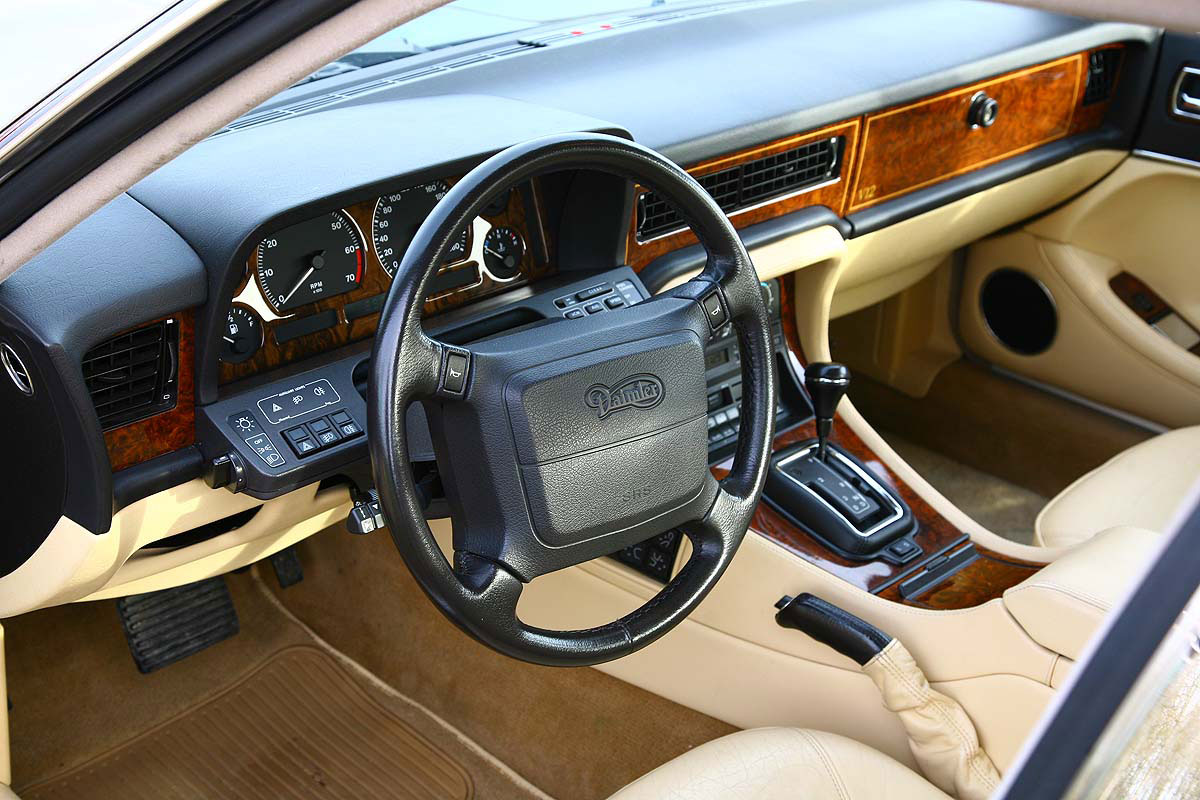
The stylish interior, finished in Magnolia leather (I suppose). The veneer is still very dark, which it not only beautiful but makes it also likely that the car has been stored inside. Unusual is that the dashboard and upper part of the door cards are black instead of 'colour coded'. I have always found this more beautiful, in particular in combination with bright leather colours. 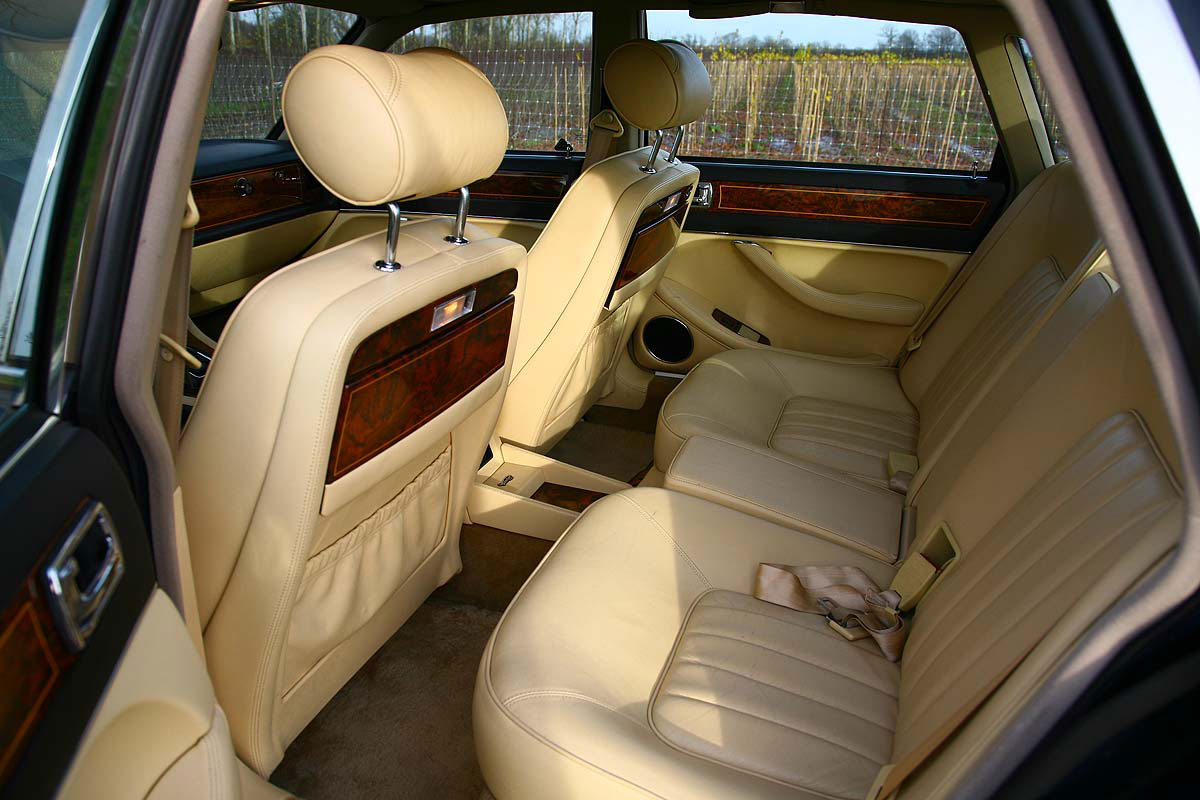

The interior is perfectly finished and, as far as visible on photos, in very good condition. Inspiring! 
This is the photo that convinced me. In a 1989 brochure, the rear compartment of the Daimler impressed me with its luxurious, warm atmosphere, styling and use of precious perfectly finished materials. |
Met vriendelijke groeten,
Rens Swart





